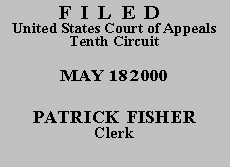

| UNITED STATES OF AMERICA,
Plaintiff-Appellee, |
|
| v. | |
| RICHARD LEVAN ENMAN,
Defendant-Appellant. |
|
Richard Levan Enman appeals the sentence imposed for violation of his supervised release. We exercise jurisdiction pursuant to 28 U.S.C. § 1291 and affirm.
On November 17, 1995, Enman was sentenced to 33 months in prison and three years of supervised release for his conviction of bank robbery. While on supervised release, Enman was charged with another bank robbery, in violation of 18 U.S.C. § 2113(a). He pleaded guilty and was sentenced to 71 months in prison and three years supervised release, to run consecutive to a 15-month sentence imposed for violation of supervised release. In sentencing Enman on his supervised release violation, the district court determined the bank robbery was a "crime of violence."
Enman contends the district court erred in finding the bank robbery was a "crime of violence," making his supervised release violation a Grade A violation under U.S.S.G. § 7B1.1(a)(1). "We review de novo questions of law regarding application of the sentencing guidelines, and review for clear error the district court's factual findings, mindful of our obligation to give 'due deference' to the district court's application of the guidelines to the facts." United States v. Spencer, 178 F.3d 1365, 1367 (10th Cir. 1999).
U.S.S.G. § 7B1.1(a) provides for three grades of supervised release violations. Grade A violations include "conduct constituting (A) a federal, state, or local offense punishable by a term of imprisonment exceeding one year that (i) is a crime of violence." U.S.S.G. § 7B1.1(a)(1). Enman contends that in finding the bank robbery was a "crime of violence," the district court failed to properly apply the definition of "use" from Bailey v. United States, 516 U.S. 137 (1995). Bailey involved a conviction under 18 U.S.C. § 924(c)(1) that imposes a prison term upon a person who "during and in relation to any . . . drug trafficking crime . . . uses or carries a firearm." The Court held that § 924(c)(1) "requires evidence sufficient to show an active employment of the firearm by the defendant." Id. at 143. Enman was convicted under 18 U.S.C. § 2113(a), not under § 924(c)(1). Therefore, the Bailey definition of "use" in the context of firearms is inapplicable to this case.
The issue is whether Enman's second bank robbery was a "crime of violence" for purposes of § 7B1.1. A "crime of violence" is defined by U.S.S.G. § 4B1.2 as
any offense under federal or state law, punishable by imprisonment for a term exceeding one year, that
(1) has as an element the use, attempted use, or threatened use of physical force against the person of another, or
(2) . . . otherwise involves conduct that presents a serious potential risk of physical injury to another.
See U.S.S.G. § 7B1.1, application note 2 (stating "crime of violence" is defined in § 4B1.2).
"Crime of violence" includes . . . robbery . . . . Other offenses are included as 'crimes of violence' if (A) that offense has as an element the use, attempted use, or threatened use of physical force against the person of another, or (B) . . . by its nature, presented a serious potential risk of physical injury to another.
U.S.S.G. § 4B1.2, application note 1. We are bound by the commentary to § 4B1.2, which specifically includes robbery as a "crime of violence." See Stinson v. United States, 508 U.S. 36, 47 (1993) ("the commentary is a binding interpretation of the phrase "crime of violence"); United States v. Smith, 10 F.3d 724, 731 n.6 (10th Cir. 1993) (same).
Further, the facts support a finding that the bank robbery was a "crime of violence." Enman pleaded guilty to bank robbery and the plea agreement stated that Enman entered the bank and handed a teller a note that read "[g]ive me the money." Record I, Doc. 12 at 3. He repeated the instruction verbally two or three times and the teller, "in fear" placed the money on the counter. Id. Enman pleaded guilty to 18 U.S.C. § 2113(a), which provides that "[w]hoever, by force and violence, or by intimidation, takes, or attempts to take, from the person or presence of another . . . any property or money . . . belonging to, or in the care . . . of, any bank" is guilty of bank robbery. The indictment charged that Enman "knowingly, and by force, or violence, or by intimidation [took] from the person and presence of [the teller] . . . property and money." Indictment at 1. By pleading guilty, Enman admitted to these allegations. See United States v. Allen, 24 F.3d 1180, 1183 (10th Cir. 1994) (noting that "a defendant who makes a counseled and voluntary guilty plea admits both the acts described in the indictment and the legal consequences of those acts"). The district court did not err in concluding that the bank robbery was a "crime of violence."
The order of the district court is AFFIRMED.
Entered for the Court
Mary Beck Briscoe
Circuit Judge
*.This order and judgment is not binding precedent, except under the doctrines of law of the case, res judicata, and collateral estoppel. The court generally disfavors the citation of orders and judgments; nevertheless, an order and judgment may be cited under the terms and conditions of 10th Cir. R. 36.3.